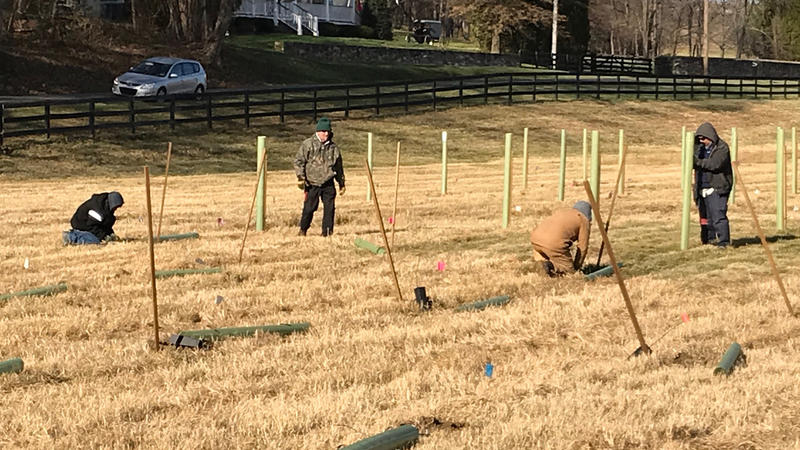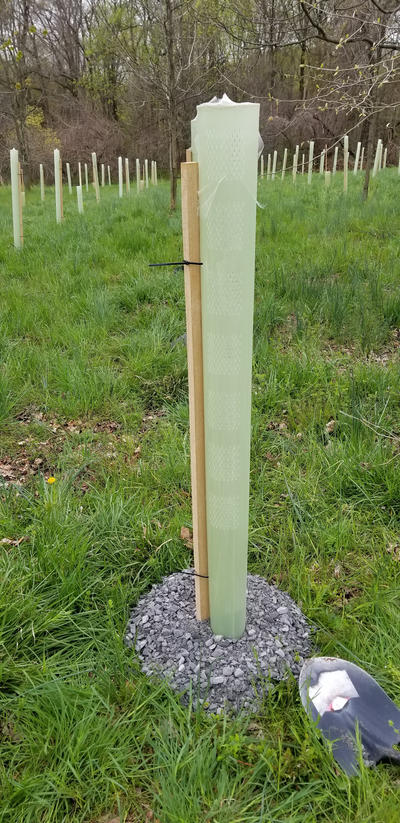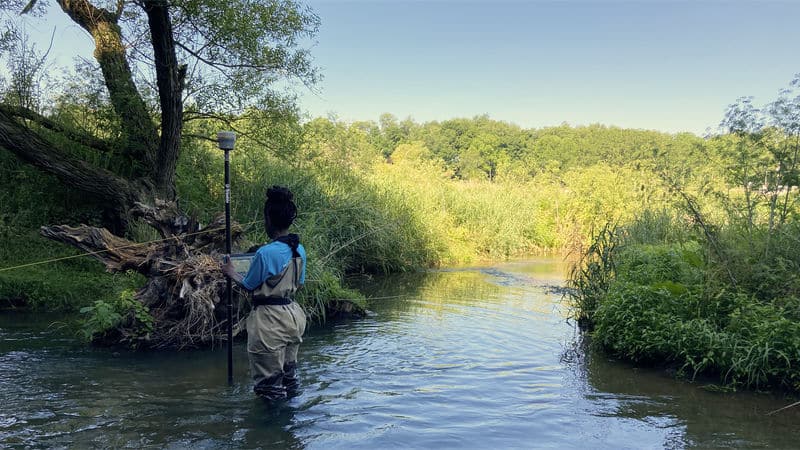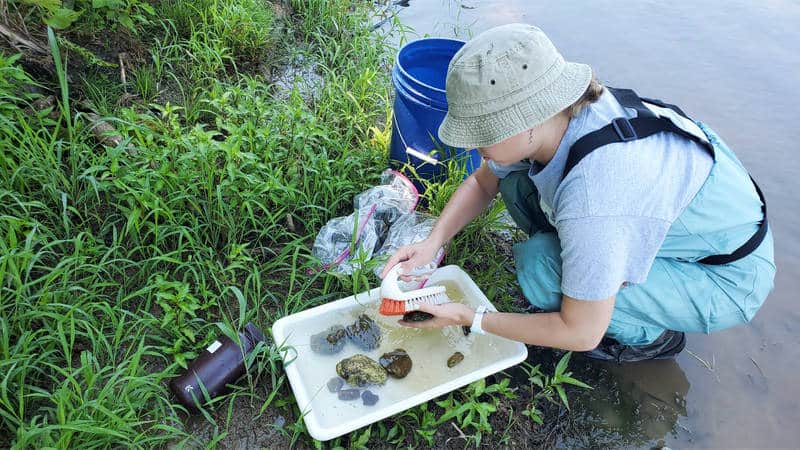New Research on Buffer Plantings Seeks to Reduce Plastic Waste, Maintenance Costs, and the Mortality of Planted Trees and Shrubs.

Wasteful spending, pollution, and the restoration of healthy streams have something in common: poorly executed tree plantings. Around the world, billions of dollars are spent on tree plantings to combat climate change, improve water and air quality, and provide a variety of environmental and human health benefits. However, a focus on planting rates rather than survival rates has meant many (often most) of those trees and dollars have been wasted.
About 20 years ago, understanding the important role of streamside forests in protecting waterways and the clean fresh water that feeds them, Stroud Water Research Center scientists sought to reforest a portion of its research stream, White Clay Creek. At the time, the tree survival rate was only 20%.
In response to those depressing odds, Bern Sweeney, Ph.D., former director and distinguished research scientist emeritus, began researching methods to improve the growth and survival of planted trees. His experiments and others have yielded a fourfold increase in tree survival and a doubling of tree growth. Best practices based on this research are now part of the guidelines for multiple U.S. Department of Agriculture programs that offer financial incentives for environmental enhancements.

Current Methods That Increase Tree Survival and Growth
The Stroud Center has made important discoveries about tree survival and growth by field testing a variety of planting and maintenance practices. Questions answered include:

- How to prevent weeds from competing with tree seedlings.
- How herbicide and stone mulch can protect against damage caused by rodents, with stone mulch being a cost-effective option.
- How tree shelters can protect against damage to planted trees caused by deer and increase tree growth.
- How different types of tree shelters affect tree survival and growth.
- When and if to remove tree shelters.
- How to control weeds, grasses, and vines inside tree shelters.
While this research has improved the odds of successful reforestation significantly, challenges remain and are the subject of a new study.
New Research to Reduce Waste From Forest Plantings
On 18 acres surrounding Octoraro Creek in southeastern Pennsylvania, the Stroud Center’s Robin L. Vannote Watershed Restoration Program is planting trees and researching ways to reduce waste — from tree loss to maintenance costs to plastic pollution from discarded tree shelters.
The site provides a unique opportunity. It’s uncommonly large with relatively uniform conditions, allowing the team to field test a variety of practices on the same site. It also comes with some common challenges facing those who attempt to plant trees: deer and reed canary grass.
Over the next four years, the team will:
- Evaluate if less frequent mowing can still effectively keep weeds and other plants from outcompeting newly planted trees.
- Test at least three brands of biodegradable tree shelters for their ability to break down after use.
- Test methods for preventing trees from flopping over due to top growth exceeding stem strength.
- Test a new approach to managing rodent damage that could reduce the likelihood of trees flopping over and eliminate the need for plastic bird nets: Instead of using shelters that create a physical barrier, use ones with a large open base to expose rodents to predators and allow birds to escape.
- Test alternatives such as fiberglass stakes, as well as larger planting stock with no staking or tree shelters, to reduce the number of stakes lost to damage from flooding and debris.
- Determine if a one-time application of herbicide prior to the use of stone mulch can help prevent reed canary grass from outcompeting newly planted trees.
- Test several methods to increase the survival of ecologically important multistem species such as dogwood and arrowwood viburnum that have been difficult to grow inside tree tubes.
In addition to the restoration research on best practices, Stroud Center principal investigators Melinda Daniels, Ph.D., and Marc Peipoch, Ph.D., have collected baseline stream data on site. They hope to acquire funding to study the long-term impact of the new 18 acres of forest on the health of Octoraro Creek.


This work would not be possible without the support of generous donors and landowners, including Carol E. Ware, Ph.D. The Stroud Center is grateful to the people who help us excel in our mission to advance knowledge and stewardship of fresh water.
What You Can Do
To learn how you can increase tree survival and growth on your property, check out these watershed restoration resources.
To support research, education, and restoration that protects clean fresh water, please donate today.



